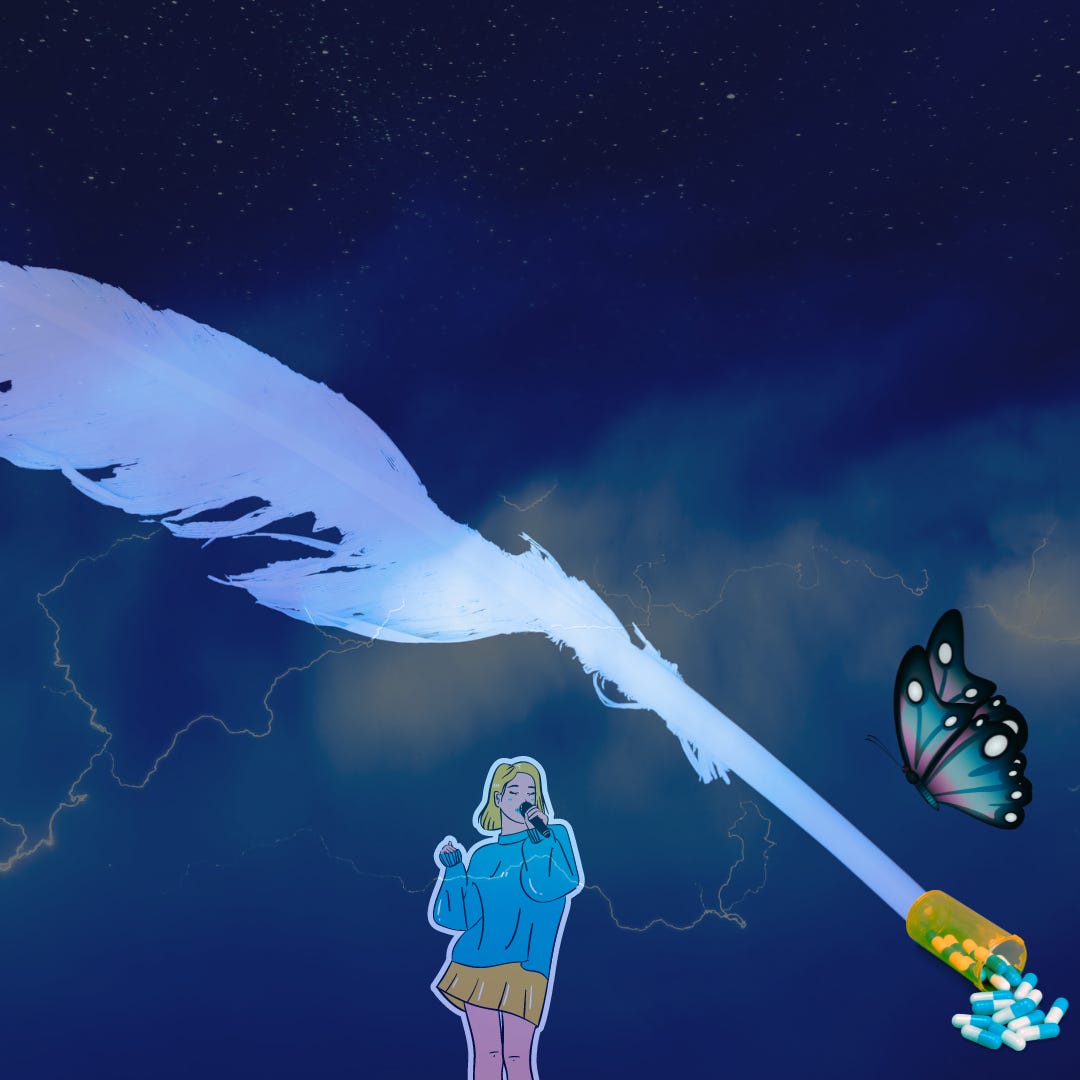Litverse's (Shocking) Top 5 Essays from 2024
The enduring popularity of grunge, Jim Morrison, Taylor Swift and literacy
When I started Litverse in 2022, I didn’t expect much. I’m a fiction writer first. To me, nonfiction always seems less honest than fiction. I discover myself when I write stories. I find only choice parts when I write essays. But, after more than 80 pieces and over 1,000 subscribers, Litverse has become one of the most fulfilling projects of my creative life. Forced focus, as it turns out, begets fulfillment. Some of this has to do with Substack as a platform: Substack makes writing on the internet more fun and reading on the internet more rewarding. Most of it has to do with the fact that people (this includes you) actually keep reading! In a connected world where everything is unending, these essays have allowed me to explore phases and philosophies and bring them to life, give them a name, live them from start to finish - and because of readers like you, I feel like I’m not doing it in isolation. So thanks for that!
To reflect on Litverse’s 2024 essays, I took a look at the five most popular pieces I published this year. These are the ones that got read the most - by far. Four of them were a big surprise. Here’s the list:
1. Kids Today Can’t Read - Even College Kids
Educators aren’t helping students rediscover the “more subtle pleasure of the pages.” They’re settling for the pleasure of a paragraph. One English teacher with thirty years of experience said that the number of novels taught in the classroom has gone from six to zero over the past few years.
This essay about the literacy rates was Litverse’s most popular article of 2024. This one wasn’t surprising. It had all the hallmarks of a successful piece, including:
Shared by my far more famous friend who writes The Intrinsic Perspective
Nothing engages readers more than insights about another generation’s failures
Substack readers are often aggrieved English majors
2. Jim Morrison’s Religion of Recklessness
In 1981’s controversial biography of Jim Morrison, No One Here Gets Out Alive, authors John Hopkins and Danny Sugarman portray a musician who died young and lived forever because he could not compromise. Read at the right angle, the book shows us that some artists do not create art: they channel.
Two articles from my series about The Doors - and authenticity as an addict and artist - scored high. These essays were about music, not literature, and something struck a chord with readers. Here’s my theories about why:
Essays about music are less common than other topics on Substack
The only people who still use the internet are in the age group that remembers The Doors
3. Jim Morrison’s End
The Doors referred to these concerts as “ceremonies” and to Morrison as a shaman, rather than a singer. The goal of every concert was to transform the audience. Concerts began with chants for not The Doors, but Morrison. But if Morrison was a shaman, what was he summoning? Didion and Thompson identify the same spirit: an all-consuming daemon on the other side of peace and love. He didn’t want unity, he wanted chaos for the sake of chaos. The more Morrison was adored, the more he sought sanctuary in an anonymous apocalypse.
There is really no difference between the popularity of the first essay and the last essay in the series - but the middle essay is nowhere to be found in the top ranks.
My only finding is that essays with a celebrity name are more likely to be clicked, unlike the middle of the series
4. Unapologetic Addicts, Dead Heroes
In 2024’s Bad Therapy, author Abigal Shrier proposes a simple idea: thinking too much and talking too much about bad feelings makes us feel bad, not good. In hearing this theory, I started to wonder how this translated to music: does listening to sad music make us sadder? Should I not be blasting Alice In Chains at the gym given the side effects?
The third most popular essay of the year was all about grunge and therapy. The idea was that it’s actually bad for you to listen to too much sad music. Just like it’s bad for you to dwell too much on sad feelings.
I’m not sure why it got so popular. Maybe because people wanted to read about Alice In Chains?
5. Taylor Swift and the Trauma Generation
It’s all about the Swifties. And there’s a lot of Swifties: according to one survey, they make up 53% of the US population. And what makes people diehard Swifties? An addiction to trauma.
In the anti-therapy view, Taylor Swift’s cataclysmic success is because millions of people are members of what journalist Abigail Shrier calls “the trauma generation.”
My breakdown of Taylor Swift turns her exes into muses was one of my more blatant clickbait topics. But it got views. Isn’t that what it’s all about? I also got to admit that I was a Swiftie.
Art of the Audience
I was a little surprised that the music stuff outranked the literature stuff. There’s a chance this is because more people are music listeners than readers of obscure classic literature. On a more arcane note, I wonder if real photos (Jim Morrison, Layne Staley) perform better for the readers or the search engines.
Does it mean I should make a resolution to write more about music? Maybe. Nothing creative can be honest if it’s made for the audience first and for the art second. But nothing successful can be made in alienation.
Luckily, I’m going in a totally different direction: Litverse 2025 is going to explore the philosophies of family, fate, and fault. In that spirit: Happy New Year! Thank you for reading. Let’s make this year about the art of gratitude.










4. had a bangin' title; couldn't have hurt its numbers.
Love your essays and analysis - you can elucidate complex ideas clearly, with a keen eye for clean turns of phrase - but I hope their greater algorithmic pull doesn't dissuade you from posting fiction as well. You do so well in that space too 🤙
Interesting new direction for 2025. Much success to you in the New Year! Keep writing!